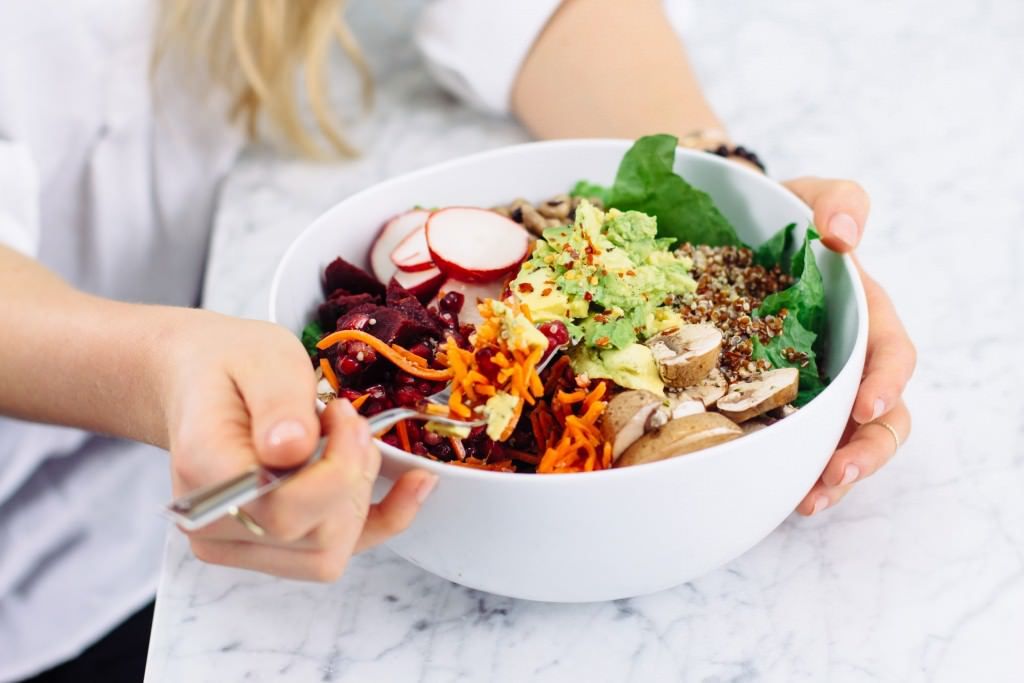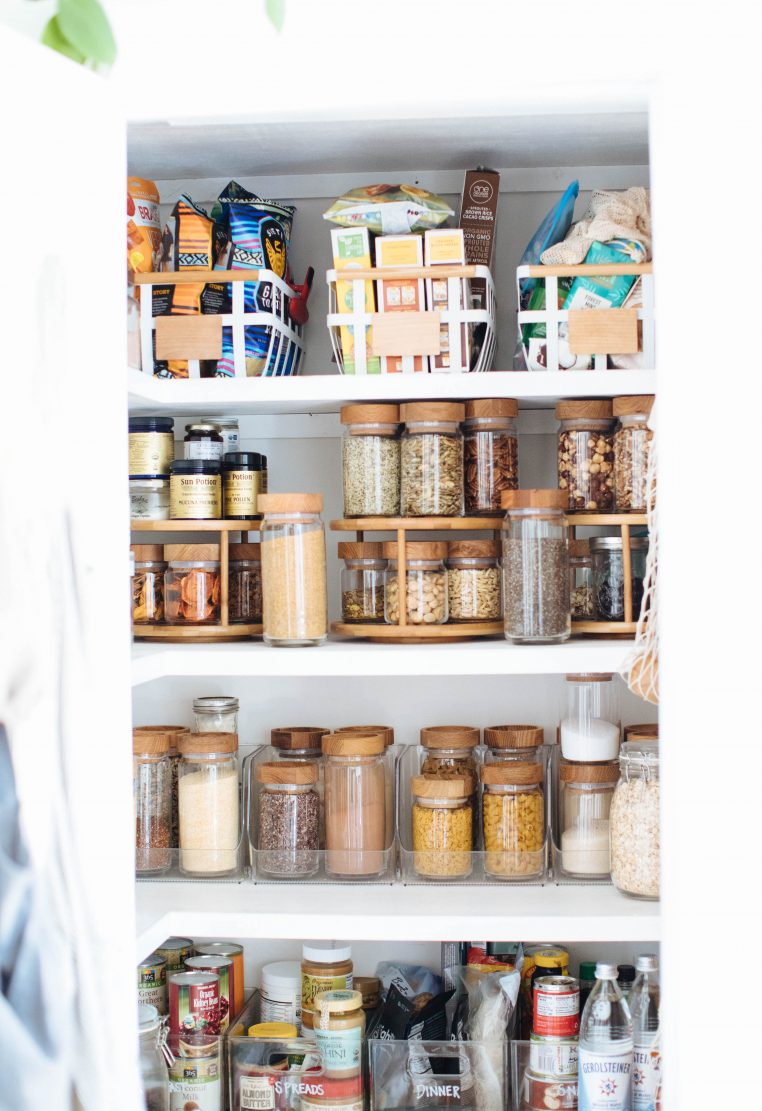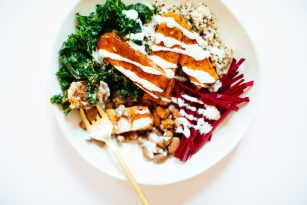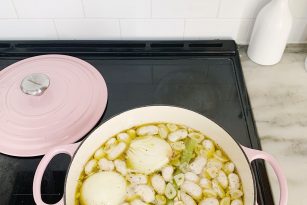Protein is such a popular topic — especially for those of you eating plant-based more frequently or for those of you who fully identify as vegetarian or vegan.
Everything from how much do you need, to how do you know if you aren’t getting enough and how to eat more at each meal.
Let’s dive into why our bodies need protein and how you can include it in your meals, whether you’re eating fully plant-based proteins or if you or someone in your household is consuming animal-protein.
Why We Need to Eat Enough Protein
Protein is an important macronutrient to have in each of our meals for quite a few reasons.
To really understand why protein is vital to your wellbeing, you need to know about amino acids, the building blocks of protein.
There are technically three groups of amino acids – non-essential, essential, and conditional.
- Non-essential amino acids: those that our bodies already have a supply of or we have the ability to make them on our own.
- Essential amino acids: those that we must gather from the foods we eat.
- Conditional amino acids: only essential during times of severe stress or trauma like surgery, medical illness, etc.
Amino acids are the building blocks of protein, and all life forms need protein in order to live and grow. You should be mindful about getting enough essential amino acids in your diet and enough variety of all amino acids. If you’re vegan or vegetarian, you should be especially mindful about amino acids in your diet.
You do not need to consume all amino acids for a complete protein. This has got to be one of the biggest myths I read time and time again, even by nutrition textbooks. You do not need to consume all amino acids at each meal to make up a “complete” protein.
Our bodies are incredibly resourceful, and we naturally have a “pool” of amino acids in supply to use for when a meal might be a little low in one amino acid or the other. The key is to consume a wide variety of protein every day, which will help ensure you’re getting a variety of amino acids. This will make sure your body has enough to make up for those times where you might be lacking.
Benefits of Protein
From helping to ensure that you feel full after your meals, to having a hand with digestion, muscle and tissue synthesis, hormone production as well as immune health and various additional functions — it’s safe to say it is vital.
Protein also makes up every cell in our bodies including the cells that make up your skin, hair, nails, muscle tone, digestive tract, and so much more. Since protein is involved in every cell in our body, it’s important to both eating enough but also eat the best quality when possible.
Nutrition research shows that eating protein at every meal, especially breakfast, can reduce the hunger hormone ghrelin and promote satiety.
Those are just a few of the reasons it is so important to eat at every meal.
Plant-Based and Animal Protein
So now let’s talk about how you can get the right sources of protein to support your body.
There’s two main categories of protein: plant-based protein and animal protein.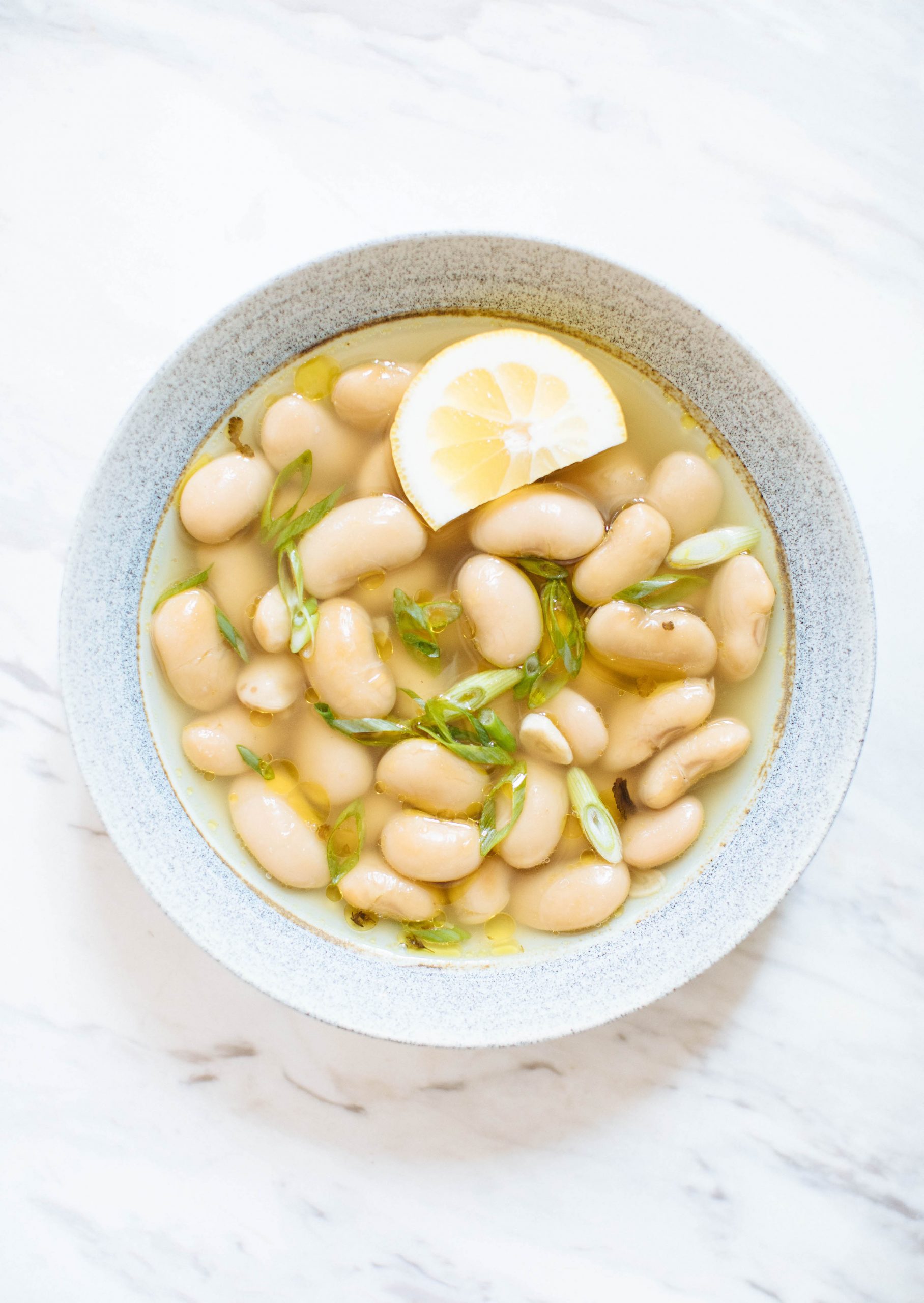
Animal proteins:
Derived an animal — beef, pork, goat, collagen, whey/casein/collagen-based protein powders, eggs, fish, cheese, etc.
Plant-based proteins:
Derived from pants — legumes, blue-green algae, tofu, tempeh, soy, nuts, seeds, etc.
I’m going to talk a little bit about both in case you’re transitioning to eating more plant-based, or you eat one way and your partner or family members eat another way.
My position on both has been the same since day one — source matters and quality matters.
If you choose to consume animal proteins, opt for those that are sourced ethically and humanely raised — from a health, ethical, and environmental standpoint.
When shopping, stick to the animal proteins labeled with: organic, 100% grass-fed, wild-caught, sustainable, humanely raised. If you’re purchasing from the butcher counter, ask them about the sourcing and share specifics of what you’re looking for so you get the best quality and you can support small farmers as locally as possible.
Similarly, with plant-based proteins, we’re also looking for organic, sustainable and whole-food sources if and when you’re able.
5 Tips For How to Get More Protein Every Day
So now, let’s jump into a few tips for making it easier for you to eat more protein in your diet.
1. Familiarize Yourself With Plant-Based Protein Options
The first tip for how to get more protein is to familiarize yourself with all of the plant-based protein options that are available to you.
There are so many great choices from tempeh to tofu, beans, lentils, nuts and seeds, quinoa, and spirulina.
I often find that so many people don’t even realize that a certain food is packed with protein and it becomes so much easier for them to start including that food in their meals.
You can keep a list right in the notes of your phone so you can pull it out when you’re grocery shopping, staring at the refrigerator wondering what to eat, or out to eat.
2. Batch Cook Protein for the Week
When I think about meal prepping and batch cooking, I like to think in terms of the Foundational Five, which is the Nutrition Stripped system for making sure you have all of the macronutrients you need for a balanced meal. You can learn more about the Foundational Five and my batch cooking tips in my free guide.
Instead of batch cooking specific recipes, I batch cook different components.
Then throughout the week, I mix and match them to form my meals. So one of the best ways to make sure you’re getting protein at each meal is to have protein options on hand so as you’re building a meal, you can easily add it on.
I usually make a batch of tempeh or tofu, beans, and quinoa. I also know that we’ll usually have fresh eggs from our chickens, protein powder, and pantry-friendly options like nuts and seeds as go-to options throughout the week as well.
This is also super helpful if your partner or family members eats differently than you.
I have a lot of plant-based eaters here, but many of their partners consume animal protein and they find it difficult to cook and eat together.
For example, my husband Jesse enjoys chicken or fish more often than I do, so during the week, we simply batch cook both the plant-based and animal-based protein in portions he and I will eat.
The rest of the meal — the veggies, flavor, grains, etc. are all the same, just the protein is different.
Both of us can enjoy what we want, but don’t have to make two totally separate meals — we just swap out that one element.
3. Keep Your Pantry Well Stocked
Many people think of chicken, steak, and eggs, but if you also consider all of the plant-based protein options, you open up more options for getting it throughout your day.
Keep your pantry stocked with things like nut butters, seeds, nuts, and canned beans, and you’ll always have a protein option that can be added to any meal without needing to cook.
4. Look for Creative Ways to Incorporate It
Protein can often seem like it needs to be the star of the dish — especially when you’re used to going to a restaurant and you see entrees that are focused on chicken, fish, or steak, for example.
But when you’re looking at a plant-based dish, you may not visually see a big portion of protein — unless you’re eating tempeh or tofu.
For example, I enjoy making homemade pizzas. We may make a nut-based cheese to go on the pizza — that’s packed with plant-based protein, but it’s not necessarily the “star” of the dish visually in the same way that a steak is. We also always start with a big salad that has seeds and nuts, which are also great sources of protein.
So get creative and look for protein-packed sauces or condiments like nut-based cheese, side dishes like a bean salad, ingredient swaps or appetizers that bring the protein into your meal in different ways.
5. Keep a Reflective Food Journal
Lastly, keep a reflective food journal to see how you’re doing and where you need more support.
As you’re trying to get protein at each meal, keep a reflective food journal noting what you ate and noticing when you did or didn’t get protein. I have a journal prompt for you to follow in my free guide that you can download after this.
As you become aware of the days or weeks you did well verus when you struggled to be consistent with this, you’ll be able to better identify what’s working, what’s not, how to adjust and how to get support.
Without this reflection, you’re not able to understand if you’re making progress or where you may be getting stuck.
How Much Protein You Should Eat in a Day
By now, I’m sure you may be wondering, ok, I know why I need protein and how to get more of it, but how much should I include in my day?
This is one of the most popular questions I get asked and this is something that I cover in much more detail inside of my mindful eating program where members learn how to identify what their body needs.
The exact amount depends on your lifestyle, your health and fitness goals, your digestion, activity level, and genetics.
What’s best to focus on is getting protein at each meal. A serving size is 3 ounces, which is roughly the size of your palm for a quick visual, however, you may need more or less depending on your body and hunger levels, so check-in with yourself. What’s most important is that you’re getting protein at each meal, but you don’t need to worry about counting specific grams of protein you’re eating.
Putting This Into Practice
Now that you have a deeper understanding of protein, be sure to download my free guide for creating healthy eating habits where I share more nutrition and mindful eating tips.

